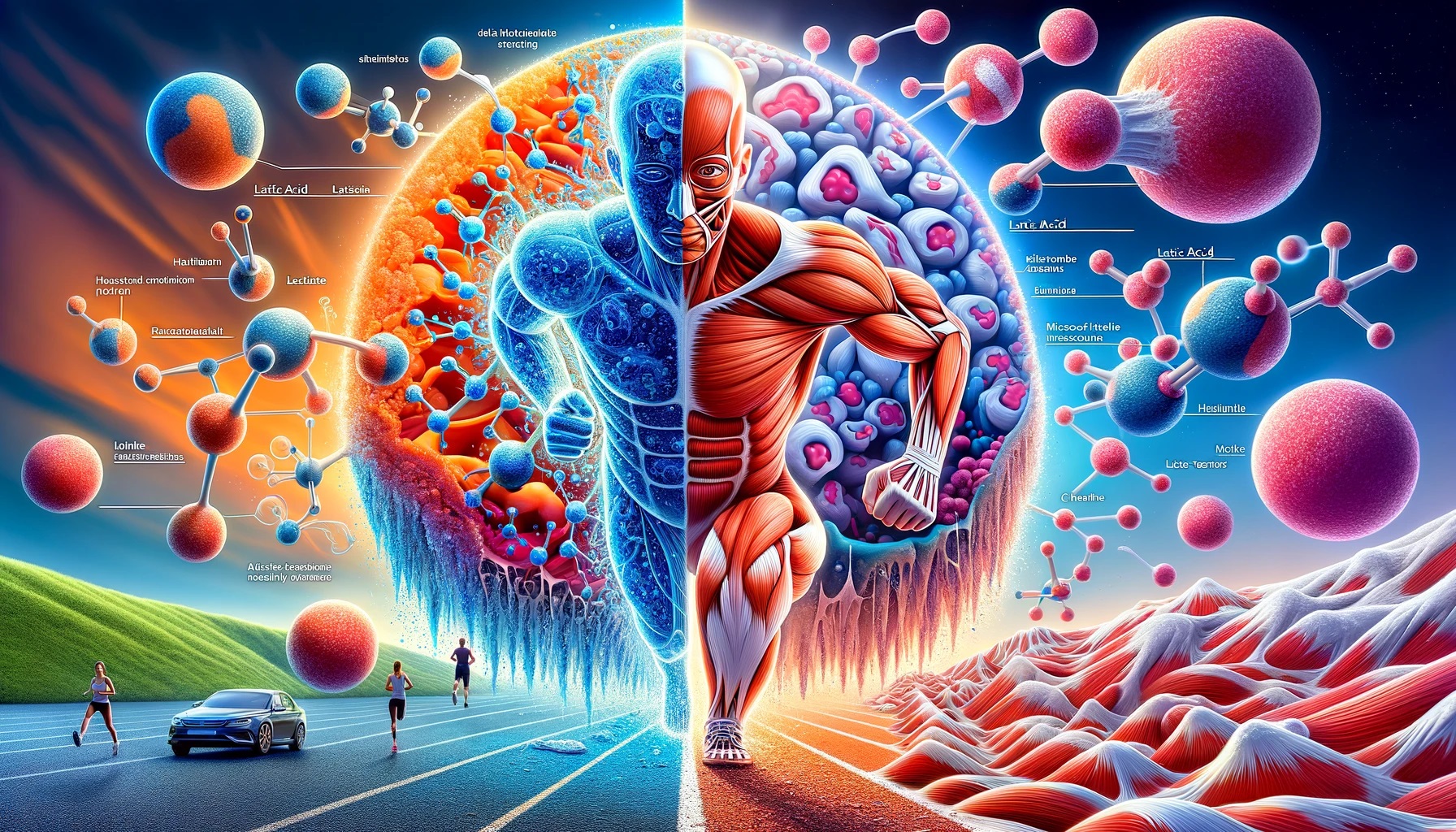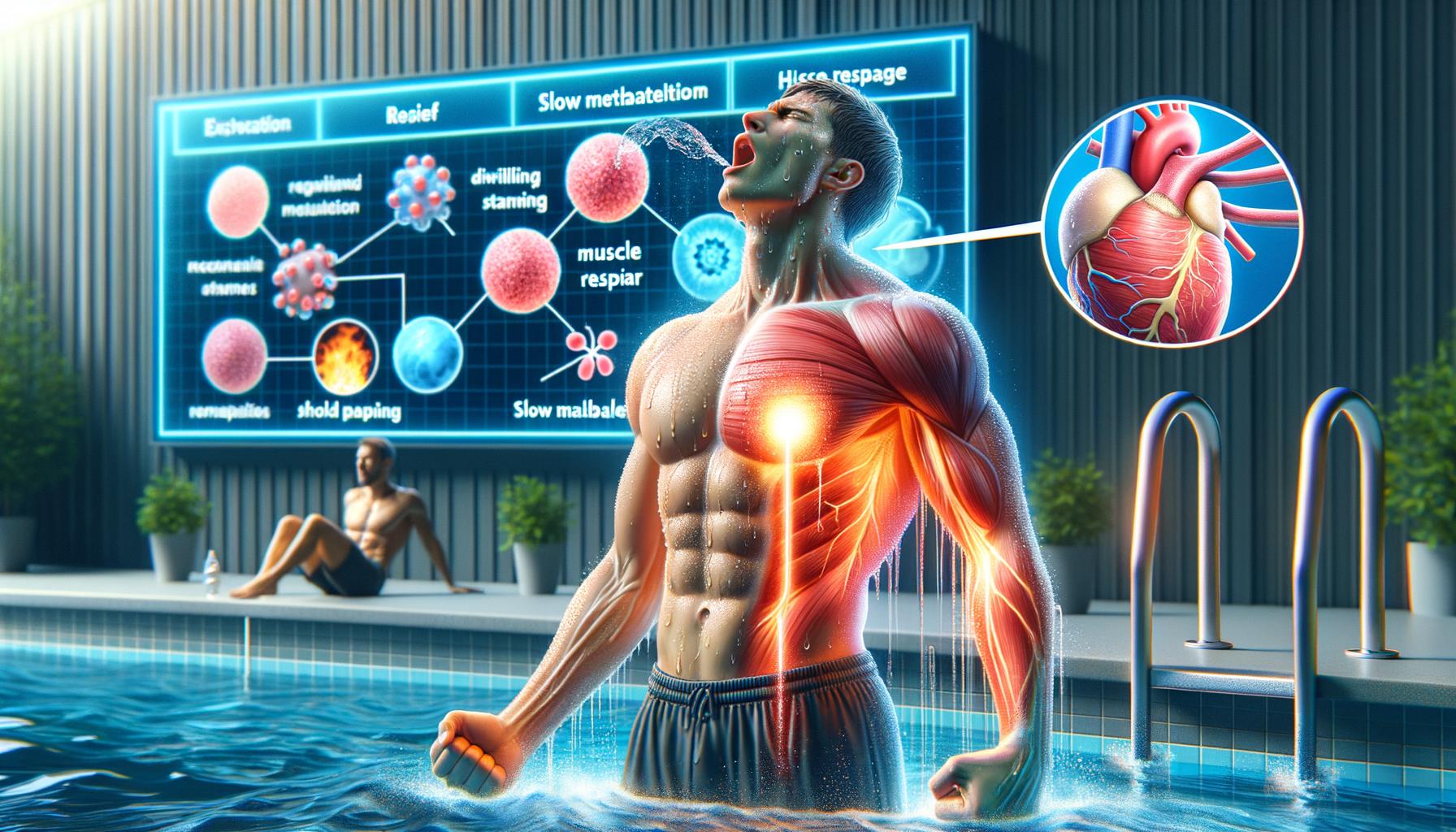· fitness · 16 min read
Enhancing Strength with NMES: Training and Recovery
Discover how neuromuscular electrical stimulation (NMES) is revolutionizing strength training and recovery in sports and rehabilitation.

In This Post
The Fact Why Should I Care How To Put In Action Start Tomorrow Guide How does it effect my ability to focus How does it impact my daily life How does it help me make friends How does it help me manage stress How does it effect my mood Summary: Remember Refresher Checklist The Full Research Article CitationsPrint Out The Tomorrow Checklist!
Sign up for our newsletter and receive a copy today, so that, you can start tomorrow! Or the next day, or the day after that. I forget everything and starting things is hard at least for me so these checklists are godsend.
Print Out The Remember Refresher Checklist!
Sign up for our newsletter and download your own copy of the Remember Refresher Checklist, so that, you can easily put it on your fridge and help you stay on target towards your WHY. Every little bit helps.
Introduction to NMES
Understanding NMES
Neuromuscular electrical stimulation (NMES) is a buzzword in the worlds of fitness, sports medicine, and rehabilitation. At its core, NMES involves generating electrical impulses that mimic those the brain sends when it wants muscles to contract. What makes NMES stand out is its ability to activate muscle fibers directly, bypassing the normal “message route” through the nervous system. This method can lead to:
- Enhanced muscle strength
- Improved endurance
- Faster recovery post-exercise
Why NMES Matters:
- It’s like giving your muscles a direct phone call instead of sending a letter.
- NMES helps both athletes and patients in injury treatment or those in physical therapy.
- Muscle fibers get a workout even if you can’t physically exercise them through traditional means.
Evolution of NMES in Sports and Rehabilitation
NMES is not new, but its application and technology have significantly evolved. Initially used for pain management and to prevent muscle atrophy in injured patients, NMES now plays a crucial role in physical fitness and high-intensity training programs. Its journey looks something like this:
- The Early Days: Used primarily in physical therapy settings.
- Advancements in Technology: More portable and user-friendly devices emerged.
- Broader Acceptance: From rehabilitation exercises to athletic training programs.
- Integration in Training Regimens: Now common in strength training, endurance improvements, and post-exercise recovery phases.
Checklist for Considering NMES in Your Routine:
- Are you looking for muscular strength enhancement?
- Do you require assistance in injury rehabilitation?
- Interested in cutting-edge physical therapy techniques?
- Seeking an edge in athletic training or sports medicine?
- Need help with functional recovery after exercise?
NMES’s versatility makes it invaluable across various domains, bridging the gap between traditional strength training techniques and modern technological advancements. Whether it’s boosting physical fitness or aiding in recovery, NMES’s potential is being explored more than ever in enhancing human performance and well-being.
How NMES Works
The Science Behind NMES
Neuromuscular electrical stimulation, or NMES, is a technique that uses electrical impulses to cause muscle contraction. This might sound a bit like science fiction, but it’s based on how our bodies naturally work. Normally, when you decide to move, your brain sends signals through your nervous system to your muscles, telling them to contract. NMES mimics this process by applying electrical currents directly to muscles, causing them to activate. This not only strengthens the muscle but can also speed up recovery after intense workouts, making it a valuable tool in both athletic training and rehabilitation exercises.
Mimicking Brain Signals
You may wonder how these machines can mimic the brain’s complex signals. The secret lies in understanding the type of electrical impulse required to trigger a muscle contraction. Scientists and engineers have worked to create devices that can generate these precise impulses. When these electrical impulses are delivered to the muscles through electrodes placed on the skin, they activate the muscle fibers just as if the brain itself had sent a voluntary muscle contraction signal. This is hugely beneficial for rehabilitation, allowing for motor unit recruitment and muscle activation even when a person may not be able to voluntarily move a muscle due to injury or surgery.
Muscle Fibers and Electrical Stimulation
Muscle fibers come in different types, each responding differently to NMES:
- Type I fibers are slow-twitch muscles used for endurance activities.
- Type II fibers are fast-twitch muscles used for short bursts of speed or strength.
A key advantage of NMES is its ability to target specific muscle fibers, especially those not easily reached through conventional strength training. Here’s a simple checklist for understanding how NMES benefits different muscle fibers:
- Stimulates both Type I and II muscle fibers: Unlike regular exercises that might target one over the other, NMES can engage both simultaneously.
- Increases muscle strength: By contracting muscle fibers, NMES enhances muscular strength enhancement over time.
- Improves endurance: Regular use can lead to endurance improvements, beneficial for athletes and individuals recovering from injuries.
- Aids in recovery: Helps with post-exercise recovery by reducing muscle fatigue and facilitating functional recovery.
Understanding the interaction between muscle fibers and electrical stimulation reveals why NMES is so effective, not just for athletes looking for a competitive edge, but also for anyone undergoing physical therapy or dealing with muscle weakness. The ability to target specific muscles or muscle groups precisely, stimulate underused fibers, and operate under controlled intensities makes NMES a versatile tool in enhancing physical fitness, assisting injury treatment, and promoting motor skills rehabilitation.
NMES for Strength Training
Neuromuscular electrical stimulation (NMES) has revolutionized the way athletes and rehabilitation patients build muscle strength. By integrating NMES into strength training regimens, individuals are able to achieve higher levels of muscular strength and endurance, pushing the boundaries of traditional training methods.
Integrating NMES into Strength Training Regimens
Integrating NMES into strength training involves the strategic placement of electrodes on the skin over target muscle groups. These electrodes deliver electrical impulses that mimic the action potential coming from the central nervous system, causing muscle fibers to contract. This can be particularly beneficial for targeting specific muscles or muscle groups during a workout, ensuring that they are activated and engaged throughout the exercise.
A simple checklist for incorporating NMES into a strength training regimen might include:
- Identifying the muscle groups to target during NMES sessions
- Adjusting the intensity of the electrical impulses to suit individual tolerance and training goals
- Planning the NMES sessions alongside traditional strength training workouts to maximize muscle engagement
- Monitoring the muscle’s response to NMES to avoid overstimulation and fatigue
Advantages Over Conventional Strength Training
One of the primary advantages of NMES in strength training is its ability to recruit a larger number of muscle fibers compared to voluntary muscle contractions during conventional exercises. This is particularly useful for enhancing muscular strength, as the increased activation can lead to greater strength gains in a shorter amount of time. Additionally, NMES has been shown to be an effective tool for muscle recovery and rehabilitation, as it can be used to activate muscles without placing stress on joints or requiring the movement that might be difficult or painful post-injury.
Furthermore, NMES can help in overcoming the limitations of gravity-dependent exercises, allowing for a more comprehensive and balanced muscle strengthening, especially in muscles that are hard to target through conventional workouts.
Case Studies and Results
Numerous case studies have substantiated the efficacy of NMES as a potent tool for enhancing muscle strength and athletic performance. For instance, athletes suffering from muscle weakness or injuries have experienced significant improvements in muscle strength and function after incorporating NMES into their training and recovery programs. These improvements have not only facilitated quicker returns to sport but have also contributed to enhanced performance levels, underscoring the role of NMES in both rehabilitation and athletic training spheres.
Moreover, research comparing NMES with traditional strength training methods has consistently demonstrated the former’s superiority in specific contexts, especially in terms of expedited strength gains and the rehabilitation of injured or weakened muscles. The targeted nature of NMES, combined with its ability to induce powerful muscle contractions, positions it as an indispensable tool in the landscape of physical fitness and sports medicine.
In summary, NMES serves as an innovative complement to traditional strength training methods, offering unique advantages in muscle strengthening and rehabilitation. Its capacity to activate a broad spectrum of muscle fibers, coupled with its utility in injury treatment and prevention, makes it a valuable asset for athletes aiming to enhance their performance and for individuals striving for functional recovery post-injury.
NMES for Recovery
Recovery is a vital aspect of any training regimen, allowing muscles to heal, rebuild, and strengthen. This segment explores the role of neuromuscular electrical stimulation (NMES) in enhancing recovery processes, comparing it with traditional recovery methods, and emphasizing its application in injury rehabilitation.
Facilitating Muscle Recovery Post-Exercise
After intense workout sessions, muscles need time to recover and repair. NMES can help speed up this process. By delivering electrical impulses that mimic the brain’s commands to muscles, NMES promotes blood flow to the targeted areas, facilitating the delivery of nutrients necessary for muscle repair. This can significantly reduce downtime between training sessions, allowing athletes to train more frequently without the risk of overuse injuries. A quick checklist for using NMES for post-exercise recovery includes:
- Utilize NMES immediately after workout sessions to enhance blood circulation.
- Begin with lower intensity to avoid muscle fatigue and gradually increase as tolerance builds.
- Focus on muscle groups that were most intensively used during the exercise.
- Combine NMES sessions with adequate hydration and nutrition for optimal recovery.
NMES in Injury Rehabilitation
Injury rehabilitation often involves restoring strength and functionality to damaged muscles, a task where NMES shines. By targeting specific muscle fibers with electrical impulses, NMES stimulates the muscles in a controlled manner, even when voluntary muscle contraction is not possible due to pain or injury. This keeps the muscles active throughout the healing process, preventing atrophy, and speeding up recovery. NMES is particularly effective in the early stages of rehabilitation when mobility is limited, offering a passive form of therapy that can be crucial for functional recovery.
Comparative Analysis with Traditional Recovery Methods
Traditional recovery methods, such as rest, ice, compression, elevation (RICE), physical therapy, and gentle exercises, are fundamentally important for healing. However, when combined with NMES, the recovery process can be significantly enhanced.
- Speed of Recovery: NMES can accelerate the recovery process by actively engaging muscles without the stress of physical weight or resistance.
- Pain Management: It offers an alternative form of pain relief, reducing the reliance on medication by stimulating the release of endorphins, the body’s natural painkillers.
- Flexibility and Strength: NMES not only aids in recovery but can also improve the muscle’s range of motion and strength during the rehabilitation phase.
A direct comparison shows that while traditional methods focus on healing, NMES adds an active component to recovery, encouraging quicker return to physical activities and reducing the risks of future injuries.
In summary, NMES serves as a powerful tool for recovery and rehabilitation, complementing traditional methods with its unique ability to stimulate muscles actively. Whether it’s speeding up muscle recovery post-exercise or aiding in the rehabilitation process after injury, NMES represents a leap forward in how we approach and manage recovery in sports medicine and physical fitness.
Implementing NMES in Training and Recovery Programs
Developing a NMES Protocol
When incorporating neuromuscular electrical stimulation (NMES) into your training or recovery regimen, developing a structured NMES protocol is crucial. This involves understanding the specific goals, whether it’s for muscle recovery, strength training, or rehabilitation. A well-planned protocol includes choosing the right type of NMES device, determining the appropriate intensity levels, and setting a schedule that aligns with your physical capabilities and objectives.
- Identify Your Goals: Establish if your focus is on enhancing muscular strength, aiding in post-exercise recovery, or supporting rehabilitation efforts.
- Select Suitable Equipment: Opt for an NMES device that meets your needs, keeping in mind factors like portability and the availability of preset programs.
- Customize Intensity and Duration: Adjust the intensity of electrical impulses to ensure comfort and efficacy. Similarly, the duration of each session should reflect your endurance and training phase.
Safety Measures and Precautions
Safety should always be a priority when using NMES for training or recovery. Here’s a checklist of safety measures and precautions to consider:
- Ensure the electrode placement is correct to avoid skin irritation and ensure optimal muscle activation.
- Start with lower intensity to gauge your body’s response and gradually increase as tolerated.
- Consult a healthcare professional, especially if you have a history of heart issues or are pregnant.
- Avoid using NMES on areas with skin lesions or infections.
- Follow the manufacturer’s guidelines on usage frequency and duration to prevent muscle fatigue or overstimulation.
Measuring Progress and Results
Tracking progress and results is vital to determine the effectiveness of your NMES protocol. Several methods can be employed for this purpose:
- Baseline Assessments: Prior to starting NMES, record baseline metrics such as strength measurements, range of motion, and pain levels if applicable.
- Regular Check-ins: Throughout the NMES program, conduct periodic assessments to observe improvements or changes in the aforementioned metrics.
- Journaling: Keep a detailed journal of your sessions, including the intensity settings, duration, and how your muscles feel after each session. Noting any signs of muscle fatigue or enhanced recovery can provide insights into the effectiveness of the protocol.
Implementing NMES into your training and recovery programs can offer significant benefits, including improved muscle activation, enhanced strength, and faster recovery times. By developing a tailored NMES protocol, adhering to safety measures, and accurately measuring progress, individuals can maximize the potential of NMES in achieving their physical fitness or rehabilitation goals. As you explore the capabilities of NMES, always remember the importance of customization and safety to ensure a beneficial and effective experience.
FAQs on NMES for Training and Recovery
In exploring the realm of neuromuscular electrical stimulation (NMES) for enhancing physical fitness through strength training and facilitating smoother rehabilitation processes, several commonly asked questions arise. These inquiries primarily focus on the frequency of NMES application, potential risks, and the possibility of NMES serving as a standalone training modality. Understanding these aspects is crucial for incorporating NMES into athletic training programs or physical therapy regimens effectively.
How often can NMES be used for training and recovery?
The frequency of NMES use for training and recovery can be highly individualized, depending on factors such as the individual’s fitness level, goals, and the specific muscle groups being targeted. However, a general guideline suggests an application range of 2-3 times per week, allowing sufficient time for muscle recovery between sessions. It’s essential to start with lower frequency and intensity, gradually increasing as the muscle adapts to the electrical impulses.
- Begin with 2-3 sessions per week
- Gradually increase frequency based on tolerance and progress
- Allow muscles to recover between NMES sessions
Are there any risks associated with using NMES?
While NMES is generally safe when used correctly, potential risks do exist, primarily if the device is not used as advised. Some common concerns include skin irritation under the electrode pads, muscle soreness, and, in rare cases, the worsening of pre-existing conditions. Adhering to safety precautions and consulting with a healthcare professional prior to beginning an NMES regimen can significantly minimize these risks.
- Follow the device’s instructions carefully
- Consult with a healthcare professional before beginning NMES
- Monitor for any adverse reactions during and after sessions
Can NMES completely replace traditional training methods?
NMES can be a powerful tool for muscle activation, strength enhancement, and post-exercise recovery. However, it is not intended to fully replace traditional training methods. Instead, NMES should be viewed as a supplementary tool that can enhance the effects of conventional strength training and rehabilitation exercises by ensuring deeper muscle fiber engagement and aiding in achieving muscular strength goals more efficiently.
- Use NMES as a supplement to traditional training methods
- Incorporate both NMES and conventional exercises for optimal results
- Consult fitness or medical professionals to tailor an appropriate training and recovery regimen
In conclusion, NMES offers an innovative approach to training and recovery, capitalizing on electrical impulses to stimulate muscle fibers, support muscle recovery, and aid in rehabilitation. Its application, when balanced with traditional methods, can lead to significant improvements in physical therapy outcomes, strength training efficiency, and overall functional recovery. Understanding how to safely and effectively integrate NMES into fitness and rehabilitation routines can unlock new potentials in physical fitness and health rehabilitation landscapes.
Conclusion
Summarizing the Benefits of NMES
Neuromuscular electrical stimulation (NMES) has become an invaluable tool in both the fitness and rehabilitation sectors. This technique leverages electrical impulses to create muscle contractions, essentially simulating the signals the brain sends during voluntary muscle movements. This technology has shown considerable promise in enhancing muscular strength, assisting in muscle recovery, and playing a pivotal role in rehabilitation processes.
NMES offers several unique advantages including:
- Improved motor unit recruitment, leading to more efficient muscle activation
- Enhanced muscle strength and endurance improvements
- Support in muscle recovery and reduction in muscle fatigue post-exercise
- Vital aid in pain management and functional recovery during rehabilitation
Future Prospects of NMES in Fitness and Rehabilitation
The future of NMES in both fitness and rehabilitation is promising, with ongoing research further exploring its potential. As technology advances, NMES devices are becoming more sophisticated, allowing for better customization of therapy to meet individual needs. This progress holds the potential for even more effective treatments in muscle strengthening, injury treatment, and physical therapy.
Check out these exciting prospects that are on the horizon for NMES technology:
Increased Accessibility: Advances in technology could make NMES devices more accessible and easier to use for the general public, not just athletes or those undergoing rehabilitation.
Integration with Wearable Technology: There’s potential for NMES to be integrated into wearable technology, providing users with on-the-go muscle activation and recovery support.
Enhanced Personalization: Future developments may offer more personalized treatment plans based on an individual’s specific muscle groups, recovery needs, or training goals, enhancing the overall effectiveness of NMES.
Broader Applications: Research might uncover new applications of NMES in areas like motor skills rehabilitation and range of motion improvements, broadening its use beyond current applications.
Neuromuscular electrical stimulation stands at the intersection of technology and human health, offering innovative solutions for enhancing physical fitness and facilitating recovery. As we continue to uncover the full spectrum of its capabilities, NMES is set to revolutionize the way we approach strength training, muscle recovery, and rehabilitation exercises, making an impactful contribution to the fields of sports medicine and physical therapy.
3 Relevant External Links
The journey through understanding and applying neuromuscular electrical stimulation (NMES) for training and recovery has been insightful. To further expand your knowledge and resource bank on NMES, electrotherapy, and the broader spectrum of rehabilitation and strength training, here are three invaluable external links.
Learn More about Electrotherapy and NMES The first link takes you to a comprehensive resource offering a deep dive into the world of electrotherapy. This platform is perfect for enthusiasts and professionals eager to understand the theoretical underpinnings and practical applications of NMES and other forms of electrotherapy in physical therapy, rehabilitation exercises, and muscle activation techniques. It’s a treasure trove for anyone looking to enrich their understanding of these modalities.
Scientific Research on NMES for Muscle Strengthening This second link leads to a journal article focusing on the role of NMES in muscle strengthening, exploring how electrical impulses contribute to muscle fibers’ growth, endurance improvements, and overall muscular strength enhancement. If you are curious about the scientific backing and research findings on NMES as a potent tool for athletic training, post-exercise recovery, and functional recovery, this article is a must-read.
Exploring Different Approaches to Injury Rehabilitation The third link provides insight into a variety of injury treatment and rehabilitation exercises, including but not limited to NMES. It’s an excellent resource for understanding how NMES fits into the broader context of physical fitness, motor skills rehabilitation, and pain management. Whether you’re recovering from an injury or looking to enhance your physical therapy practices, this link offers a wealth of knowledge.
For those eager to delve deeper into NMES and related subjects, these links are starting points for an educational journey. Before you click away, here’s a quick checklist to ensure you’re fully equipped to incorporate NMES into your routines effectively:
MDX Checklist for Implementing NMES in Your Routine:
[ ] Fully understand the principles of neuromuscular electrical stimulation
[ ] Have a specific goal (strength training, muscle recovery, functional recovery)
[ ] Consult with a professional in physical therapy or sports medicine
[ ] Start with lower intensity and gradually increase based on comfort and results
[ ] Combine NMES with conventional strength training or rehabilitation exercises for optimal outcomes
[ ] Regularly assess your progress and adapt the protocol as necessary
[ ] Stay informed about the latest research and guidelines in NMES, electrotherapy, and related fields
The fields of NMES, electrotherapy, and rehabilitation are continuously evolving. Stay curious, stay informed, and most importantly, embrace the journey toward improved physical fitness and well-being.





